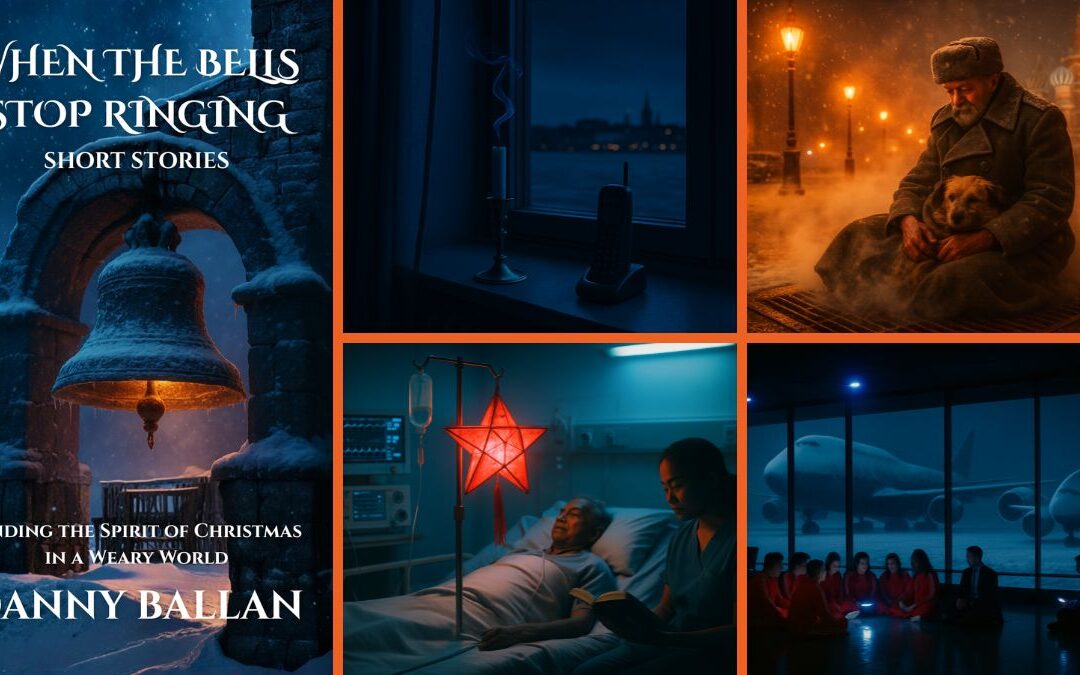Literary Devices: Metaphor and Its Evocative Power
Imagine reading a poem or novel, and suddenly, a phrase leaps off the page, resonating with you on a deeper level. The author doesn’t just describe something plainly; they compare it to something else, something unexpected, yet perfectly fitting. That’s the power of metaphor in literature. It transforms the ordinary into something extraordinary by drawing connections between seemingly unrelated things, allowing readers to experience emotions and ideas in a richer, more imaginative way.
Metaphor is one of the most powerful literary devices, used to evoke feelings, paint vivid imagery, and express complex ideas in a relatable way. But what makes metaphor so evocative? And how does it translate into real life, offering us new perspectives and deeper understanding? Let’s dive into the world of metaphor and explore its significance both in literature and in everyday communication.
What is a Metaphor?
A metaphor is a figure of speech that compares two unlike things by saying one is the other, without using “like” or “as.” Unlike similes, which make direct comparisons (e.g., “as brave as a lion”), metaphors imply a deeper connection by equating two things. This makes the comparison more immediate and powerful.
Consider Shakespeare’s famous line from As You Like It: “All the world’s a stage, and all the men and women merely players.” In this metaphor, the world is compared to a stage, and people are likened to actors. Shakespeare isn’t just saying life resembles a stage; he’s implying that life is a stage, filled with roles, performances, and fleeting moments. The metaphor forces us to think about life’s impermanence and the roles we play in it, adding layers of meaning to a simple observation.
The Evocative Power of Metaphor
Metaphors tap into our emotions and imagination in a way that literal language cannot. By linking two seemingly unrelated things, metaphors create surprising connections that invite readers to see the world in new ways. They can be bold, poetic, and transformative, making abstract concepts easier to understand and more relatable.
For example, in Emily Dickinson’s poem “Hope is the thing with feathers,” the metaphor of hope as a bird is both simple and evocative. She doesn’t describe hope directly; instead, she likens it to a bird that “perches in the soul” and “never stops at all.” This metaphor suggests hope’s resilience, gentleness, and enduring nature. Rather than a distant, abstract concept, hope becomes something tangible and alive, fluttering within each of us.
In real life, metaphors help us express feelings and experiences that are difficult to explain in literal terms. Think about how we often describe emotions: “She’s a shining star,” “He’s drowning in work,” or “Time is a thief.” These metaphors allow us to communicate complex ideas—like pride, stress, or the fleeting nature of time—by connecting them to more concrete images. The evocative power of metaphor lies in its ability to convey meaning in a condensed, imaginative way.
Why Metaphors Matter in Literature
Metaphors enrich storytelling, adding depth to characters, settings, and themes. They allow writers to convey meaning subtly, letting readers interpret and explore ideas beyond the surface level. The best metaphors are those that don’t just decorate the text but enhance its emotional and intellectual impact.
In F. Scott Fitzgerald’s The Great Gatsby, the green light at the end of Daisy’s dock is a central metaphor representing Gatsby’s unattainable dream. It’s more than just a light—it symbolizes Gatsby’s longing for the past, his desire for success, and the elusive nature of the American Dream. Through this single image, Fitzgerald evokes a sense of hope, ambition, and inevitable disappointment, themes that resonate throughout the novel.
Similarly, in Toni Morrison’s Beloved, the character Sethe’s memories and traumas are represented through metaphors of water and flooding, which convey overwhelming emotions and the inescapable force of the past. Morrison’s metaphors deepen our understanding of the psychological and emotional experiences of her characters, making their struggles more tangible and universal.
Metaphors also offer writers a way to explore complex ideas, such as love, death, time, and identity, in a way that feels personal and accessible to readers. They bridge the gap between the abstract and the concrete, helping us relate to ideas that might otherwise feel distant or difficult to grasp.
Real-Life Applications of Metaphor
The power of metaphor isn’t limited to literature; it’s deeply woven into our everyday language and thought processes. We use metaphors to make sense of the world around us, to explain complex situations, and to connect with others emotionally. From politics to business to relationships, metaphors help us frame our experiences in ways that are more relatable and meaningful.
In business, for example, leaders often use metaphors to inspire and motivate their teams. Phrases like “breaking through glass ceilings” or “navigating uncharted waters” evoke strong images that encourage people to push boundaries and embrace challenges. These metaphors create a sense of possibility and adventure, transforming mundane tasks into something more significant.
Even in personal conversations, metaphors help us articulate feelings that are hard to define. When someone says, “I’m walking on thin ice,” they’re using a metaphor to convey the idea of being in a risky or precarious situation. This image instantly helps us understand their emotional state without needing further explanation.
How to Use Metaphors Effectively
Using metaphors effectively requires finding the right balance. Overuse or forced metaphors can feel heavy-handed and distract from the message. However, when used thoughtfully, metaphors can transform your writing or communication, adding emotional depth and clarity.
Here are some tips for incorporating metaphors into your writing or speech:
- Be Creative, but Clear: Choose metaphors that enhance your message without confusing the reader or listener. The connection between the two ideas should feel natural and intuitive.
- Match the Tone: The metaphor you use should match the tone and mood of your message. A playful metaphor might work well in a lighthearted context, while a more serious or somber metaphor is better suited for weightier topics.
- Avoid Clichés: While phrases like “a mountain to climb” or “light at the end of the tunnel” are common metaphors, they’ve become overused. Try to come up with fresh, original metaphors that capture your unique voice.
- Consider the Impact: Think about how the metaphor will resonate with your audience. A powerful metaphor can leave a lasting impression, helping your message stick in the minds of readers or listeners.
What You Can Do
Next time you’re writing a story, essay, or even an email, try incorporating a metaphor to add depth and emotion to your message. Consider how you can use metaphors in your everyday conversations to express yourself more creatively. Whether you’re describing a personal challenge, sharing an idea at work, or explaining a complex concept, metaphors can help you communicate more effectively and memorably.
Metaphors transform how we think, feel, and understand the world around us. How will you use the evocative power of metaphor in your own life to create more vivid, meaningful connections with others?
Expand Your Vocabulary
- Metaphor
- Meaning: A figure of speech that compares two unlike things by stating one is the other.
- Everyday Use: “Time is a thief” is a metaphor that suggests time steals moments from our lives, making us feel as though it’s moving too fast.
- Evocative
- Meaning: Bringing strong images, memories, or feelings to mind.
- Everyday Use: An evocative description of a sunset can make you feel like you’re standing there, watching the colors fade into the horizon.
- Resonance
- Meaning: The ability to evoke or suggest lasting emotions or thoughts.
- Everyday Use: A powerful speech can have a deep resonance, making the words stay with you long after the speech is over.
- Concrete
- Meaning: Something tangible or real, as opposed to abstract or theoretical.
- Everyday Use: A concrete example in a presentation helps clarify abstract ideas, making them easier to understand.
- Abstract
- Meaning: Ideas or concepts that are not tied to physical objects; theoretical.
- Everyday Use: Love, freedom, and hope are abstract concepts that can be difficult to define but are often expressed through metaphors.
- Subtle
- Meaning: Delicate or understated, often referring to something not immediately obvious.
- Everyday Use: A subtle change in someone’s tone of voice can convey a hidden meaning or emotion.
- Simile
- Meaning: A figure of speech that compares two things using “like” or “as.”
- Everyday Use: “He’s as brave as a lion” is a common simile that directly compares courage to a lion’s strength.
- Cliché
- Meaning: An overused phrase or idea that has lost its originality.
- Everyday Use: Phrases like “at the end of the day” or “a diamond in the rough” are often considered clichés because they’ve been used so frequently.
- Intrinsic
- Meaning: Belonging naturally; essential.
- Everyday Use: The intrinsic beauty of a flower lies in its delicate petals and natural colors, something that doesn’t require embellishment.
- Imagery
- Meaning: Visually descriptive or figurative language used to create pictures in the mind.
- Everyday Use: When someone describes a bustling marketplace with the smell of spices and the sound of merchants, they’re using imagery to bring the scene to life.
Let’s Talk
- Metaphors can transform simple ideas into something more meaningful. How often do you use metaphors in your everyday conversations, and do you think they help express your thoughts more clearly or creatively?
- Some metaphors, like “time is a thief,” evoke strong emotions. Can you think of any metaphors that resonate deeply with you? Why do you think they have such a strong impact?
- Metaphors allow us to make abstract ideas more concrete. Are there abstract concepts in your life—like love, fear, or ambition—that you find easier to explain using metaphorical language? How do these comparisons shape the way you understand these emotions?
- Similes and metaphors are both powerful tools, but they work slightly differently. When do you find yourself using similes instead of metaphors, and which do you think is more effective for storytelling or communication?
- Clichés can sometimes weaken the power of metaphors because they’re overused. Can you think of a metaphor or phrase that has become a cliché, and how might you refresh it to make it more impactful?
Consider these questions in conversations with others or reflect on them yourself to gain a deeper understanding of how metaphorical language can influence the way we communicate and experience the world.










0 Comments